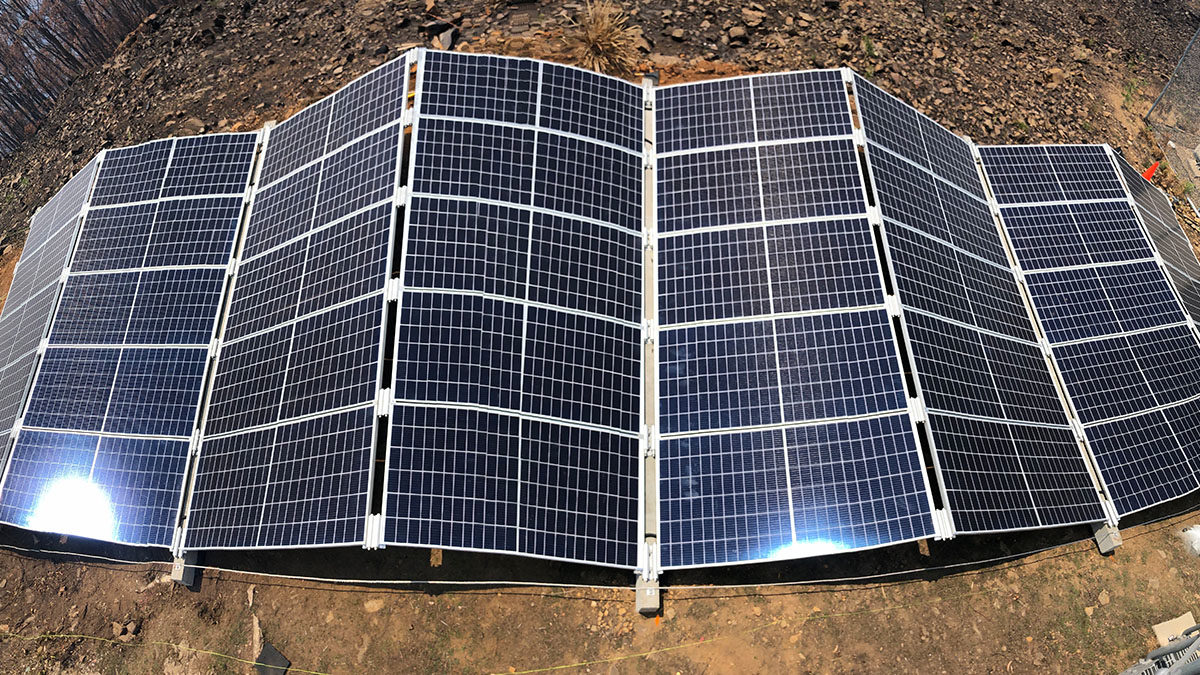Australian software billionaire Mike Cannon-Brookes has promised up to $12 million to install solar and battery systems in communities disconnected from the electricity grid by bushfire or flood. The initiative will be carried out in collaboration with Sydney-based pre-fabricated solar array manufacturer 5B and battery maker Tesla through a new venture, known as the Resilient Energy Collective.
In the wake of cataclysmic bushfires and more recent storms and floods, some hundred sites remain disconnected from the grid in New South Wales, Victoria, and South Australia. While some are relying on diesel generators, others are without power and in need of the quickest possible solution to get their lives back on track.
“In three weeks we’ve come together, found the technology, adapted it, put it on trucks and right now it’s operating, generating electricity,” says Cannon-Brookes. “That’s what this collective is all about; getting the best tech and the best ingenuity together to solve a massive problem, in days, not months or years.”
Here’s a little something I’ve been working on with brilliant mates at @5B_Au & @Tesla to bring power to bushfire communities v fast. Installed in under a day, can last 20 years. An amazing Aussie story of resilience, ingenuity & action in the face of terrible circumstances 🌱❤️ https://t.co/t32hUgAQbt
— Mike Cannon-Brookes 👨🏼💻🧢🇦🇺 (@mcannonbrookes) February 19, 2020
For the rapid off-grid rollout, Cannon-Brookes turned to technology providers he is well familiar with. Back in 2017, his Twitter exchange with Elon Musk spurred the installation of the world’s largest lithium battery in South Australia in just under 100 days leaving the Australian billionaire “never more happy to lose a bet”. He has also worked together with 5B, which has been named preferred supplier for the 10 GW Northern Territory solar farm that is partially funded by Cannon-Brookes.
The systems to be rolled out by the Resilient Energy Collective will be customized to individual energy needs. In standard configurations, the solar+storage systems will cover anything from 8 kwh per day up to 400 kwh per day and allow homes, businesses and community infrastructure to operate off-grid, 24 hours a day.
The new venture is already working with network service providers including Essential Energy, Endeavour Energy, AusNet and SA Power Networks and energy providers to target the most urgent sites across NSW, Victoria and South Australia. Thus far, the stand-alone systems have been deployed at two locations.
A vital emergency communications tower at Peak Alone near Cobargo in south-east NSW has been re-electrified with the help of solar and storage. This unit supplies a police radio tower and an RFS, National Parks and Eurobodalla Shire radio tower. The stand-alone system was installed in less than two days helping firefighters ditch noisy and polluting diesel generators.
Another system has been installed to power the Goongerah Community Hall in East Gippsland, Victoria. The hall will now be used by local residents for relief services, internet connection, refrigeration and community meetings.
“These systems are cheaper than diesel generators and they are up and running months before electricity will be fully restored,” Cannon Brookes says. “In the future, we see a world in which many remote communities operate on solar power, off-the-grid. It will be more stable, more resilient and less prone to damage.”
This content is protected by copyright and may not be reused. If you want to cooperate with us and would like to reuse some of our content, please contact: editors@pv-magazine.com.









By submitting this form you agree to pv magazine using your data for the purposes of publishing your comment.
Your personal data will only be disclosed or otherwise transmitted to third parties for the purposes of spam filtering or if this is necessary for technical maintenance of the website. Any other transfer to third parties will not take place unless this is justified on the basis of applicable data protection regulations or if pv magazine is legally obliged to do so.
You may revoke this consent at any time with effect for the future, in which case your personal data will be deleted immediately. Otherwise, your data will be deleted if pv magazine has processed your request or the purpose of data storage is fulfilled.
Further information on data privacy can be found in our Data Protection Policy.